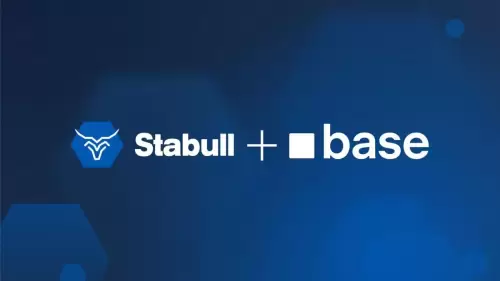 |
|
 |
|
 |
|
 |
|
 |
|
 |
|
 |
|
 |
|
 |
|
 |
|
 |
|
 |
|
 |
|
 |
|
 |
|
Cryptocurrency News Articles
Despite Entering Office with Promises to Champion the US Bitcoin Mining Industry, President Donald Trump's Return to the White House Hasn't Translated
May 02, 2025 at 02:09 pm

President Donald Trump’s return to the White House saw him enter with promises to champion the US Bitcoin mining industry.
However, as American crypto miners prepare to release their first quarterly earnings since the administration change, analysts anticipate a challenging period for the sector.
This is marked by several factors including anticipated losses, squeezed margins, and operational headwinds, even against the backdrop of Bitcoin hitting record highs earlier in the year.
The paradox of pain: losses despite high Bitcoin prices
The prevailing expectation is one of financial strain. Seven out of the eight largest publicly traded Bitcoin miners based in the US are projected to report a net loss for the first quarter of 2025, according to analyst estimates compiled by Bloomberg.
This stark outlook contrasts sharply with the significant adjusted net income of $1.1 billion reported collectively by the group in the same period of 2024, now estimated to swing to a loss of $190 million.
Among the cohort, only CleanSpark Inc (NASDAQ:CLSK) is anticipated by analysts to post a profit.
This downturn comes despite Bitcoin reaching a record above $109,000 in January and averaging roughly 75% higher in price during the first quarter compared to the previous year.
Coming on Thursday, major player Riot Platforms Inc (NYSE:RIOT) is expected to report a Q1 loss of $296.4 million, a dramatic reversal from its $211 million net income in Q1 2024.
Competitive squeeze: record difficulty and rising costs
Several factors are converging to pressure miners’ profitability. A primary challenge is the soaring level of competition within the network.
Mining difficulty, a metric reflecting the total computing power dedicated to securing the Bitcoin blockchain, has repeatedly broken records in recent months. This surge in the global “hash rate” means more miners are competing for the same fixed amount of newly issued Bitcoin rewards.
“This is going to be an interesting quarter for the Bitcoin miners and perhaps a difficult one over the past few months,” commented Brian Dobson, managing director at brokerage firm Clear Street.
“We will see margin compression and lower revenues from Bitcoin mining due to that higher global difficulty rate.”
This intense competition is partly a legacy of the late 2024 Bitcoin price surge, fueled by Trump’s pro-crypto stance, which prompted miners to rush orders for more powerful, specialized mining machines (rigs).
Furthermore, rising energy costs in some key US mining states have added to operational expenses during the same period.
Growth in international mining operations, including from Russia and China, has also intensified the global hash rate competition, according to Ethan Vera, COO at Luxor Technology.
Tariff tremors and strategic hesitation
Compounding the competitive pressure are the direct and indirect impacts of US trade policy. The specialized mining rigs essential for operations are mostly manufactured in Asia. Tariffs imposed on these machines, some originating from countries like Malaysia, directly increase capital expenditure for US miners.
“I think the tariffs will benefit everyone outside the U.S. and will be very detrimental to the U.S. return profiles and growth forecasts from that,” said Vera.
“We can’t get the ASIC chips due to the tariffs. I think the tariffs will benefit everyone outside of the U.S. and will be very detrimental to the U.S. return profiles and growth forecasts from that. We can’t get the specialized ASIC chips due to the tariffs.”
Tariffs on machines from Malaysia, a key source for miners, began at 15 percent in 2024 and were later raised to 42 percent. Further increases are reportedly under consideration by the Trump administration.
The Biden administration also blacklisted AI affiliate of Bitmain, Xiamen Sophgo Technologies Ltd, in January as part of broader sanctions on Chinese firms.
The move is expected to disrupt specialized mining rig supply chains and potentially impact the availability of machines for the U.S. industry.
Overall, the unpredictable nature of tariff policy is creating strategic paralysis, according to Dobson.
“The management teams are hesitant to develop a multi-year strategy based on what tariffs look like today when they realize that three months from now we could have a very different conversation on what the tariffs would look like,” he said.
Capital crunch: shifting financing strategies
Accessing capital has also become more challenging. Many public miners relied heavily on “at-the-market” (ATM) stock offerings to raise billions for purchasing machines and funding energy-intensive operations.
However, the retreat in the broader stock market since the post-election highs has made equity financing less attractive.
Consequently, companies are increasingly turning towards debt instruments. MARA Holdings Inc (NYSE:MARA), Riot Platforms, and CleanSpark have all utilized convertible bonds or credit facilities recently to secure liquidity.
“I think the big public companies don’t want to sell shares in the current market, this is an expensive way for them to raise capital, whereas the
Disclaimer:info@kdj.com
The information provided is not trading advice. kdj.com does not assume any responsibility for any investments made based on the information provided in this article. Cryptocurrencies are highly volatile and it is highly recommended that you invest with caution after thorough research!
If you believe that the content used on this website infringes your copyright, please contact us immediately (info@kdj.com) and we will delete it promptly.






























































